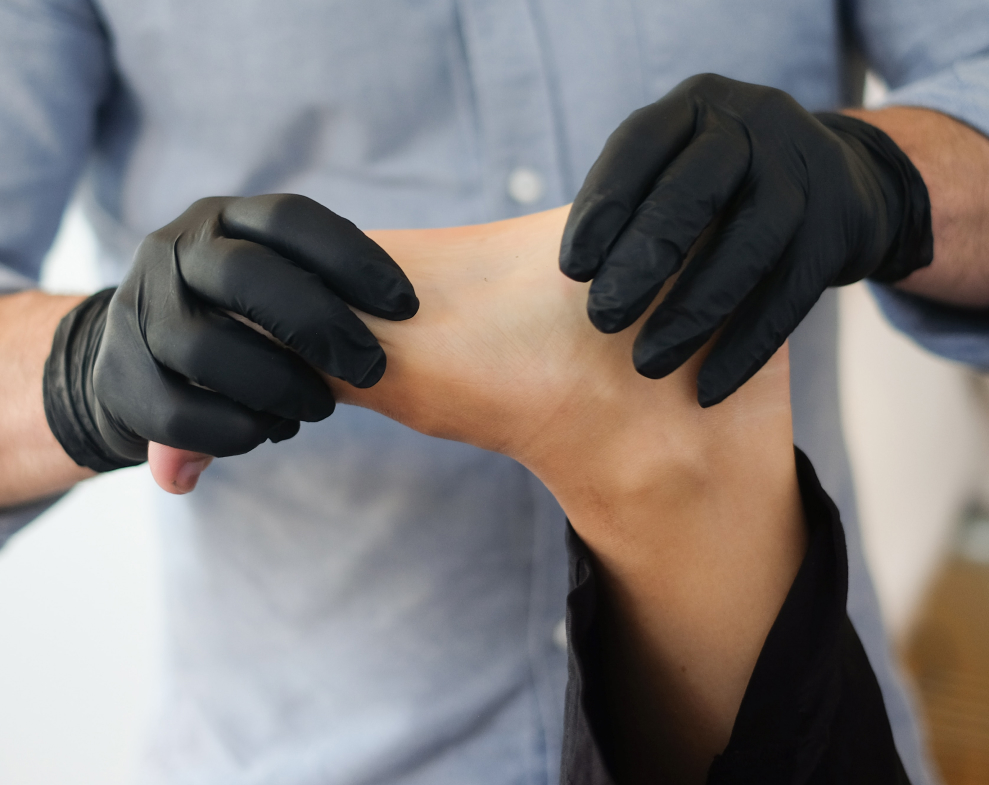Recovery – Stretching
Stretching before and after workouts may prevent injury and can make the difference between having a mediocre workout and a stellar one. The stretches outlined below are more dynamic and involve the muscles regularly used in baseball. Keep the following tips in mind:
- Before you stretch, warm up by jogging for 5 minutes.
- While stretching, relax and be patient. Take deep, full breaths to maximise results.
- Keep your stretches static: NO bouncing or abrupt movements.
- Optimally complete 3–5 reps of each stretch.
- Hold pre-workout stretches for about 10 seconds.
- Hold post-workout stretches for up to 30 seconds
Seated 90/90 Stretch
Benefit: The hips get excessively tight when the lower half is used explosively. The Seated 90/90 Stretch helps to open up the hips and correct sitting posture at the same time.
Method: Sit on a bench with your legs in front of you. Take the outside of one foot and place it at the bottom of your upper leg, just above your knee. Relax the hip and let the knee drop slightly, but not below the level of the stable knee. Place your hands on the outside of the quads on the leg you are mobilizing to gently guide the movement. Be sure to keep a neutral spine during this movement – do not round at the back. You should feel a stretch in the outside of the hip.
Cradle Walks
Benefit: The hips get excessively tight when the lower half is used explosively. The Cradle Walk is a dynamic stretch that opens up the hips like the Seated 90/90 Stretch, but with some added difficulty.
Method: Stand feet shoulder width apart. Take a step forward, bringing the knee upwards and the outside of the foot to the bottom of the quads of the stable knee. Use your hands to gently pull upwards, and do not round at the back to grasp your mobile leg. You should feel a stretch in the outside of the hip.
Wall Quad Stretch
Benefit: The quads are heavily used during the pitching motion as well as most weight training movements. Mobilizing them will ensure optimal range of motion throughout all affected movements.
Method: Stand facing a wall, bracing yourself against it with your free hand. Pull your heel into your butt and stretch your quad out; hold this position.
Ichiro Stretch
Benefit: Combining ankle and hip mobility in a deep squat position creates awareness of the importance of keeping a neutral spine.
Method: Stand feet slightly wider than shoulder width apart. Drop your butt between your legs in an unloaded squat, pointing your toes slightly outwards. Keep your heels on the ground and push your knees outwards while keeping a neutral spine and neck. Use your elbows to push your knees out to gain greater range of motion at the hips.
Cobra Pose
Benefit: Most athletes do not have a good idea of what a neutral or slightly extended lumbar spine feels like. The Cobra Pose places them in a great position to create awareness and to increase mobility at the thoracic spine.
Method: Lay prone on the ground, face down. Place your hands in a push-up position, slightly inside your shoulders’ width. Press upwards, raising your torso while your legs stay pinned to the ground. Control your breath and stay at the top position at end range of motion.
Elbow Extension Stretch
Benefit: The muscles of the forearms get tight after all throwing workouts, restricting the range of motion at the elbow and increasing the chance of injury. The Elbow Extension Stretch helps to regain mobility in the affected area.
Method: Stand tall and raise one arm in front of you, palm facing upwards. With your other hand, grab your fingers and pull the elbow and wrist into extension while straightening your elbow. You’ll feel a stretch on the top of the forearm.
Cross-Body Stretch
Benefit: This is a less aggressive stretch than the Sleeper Stretch and works as a solid alternative.
Method: While standing, reach over your glove side shoulder with your throwing arm. Gently pull your throwing elbow across your body until you feel a stretch in the posterior shoulder.






